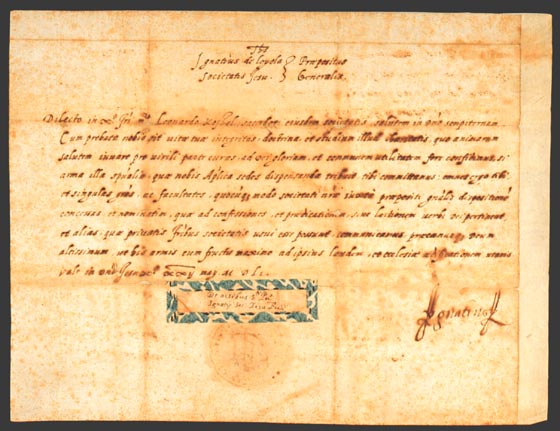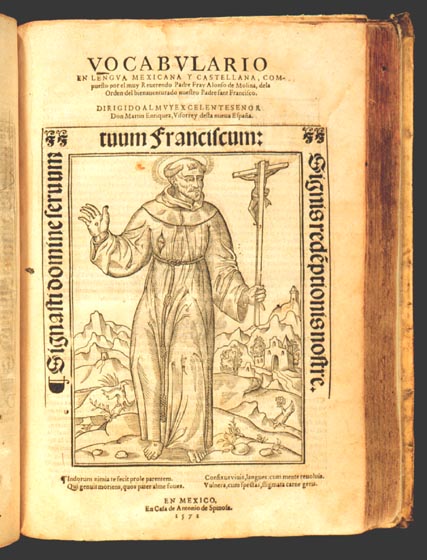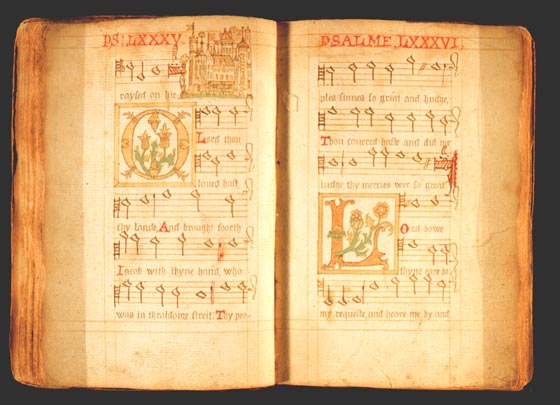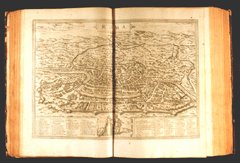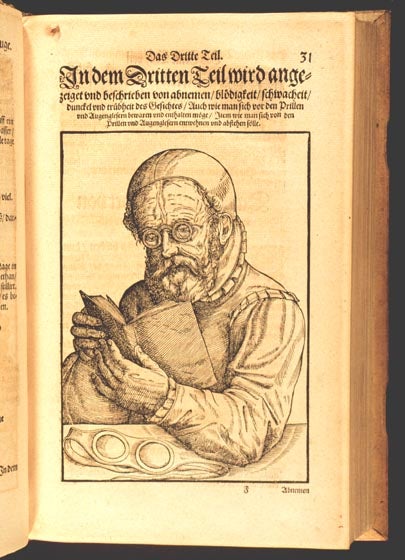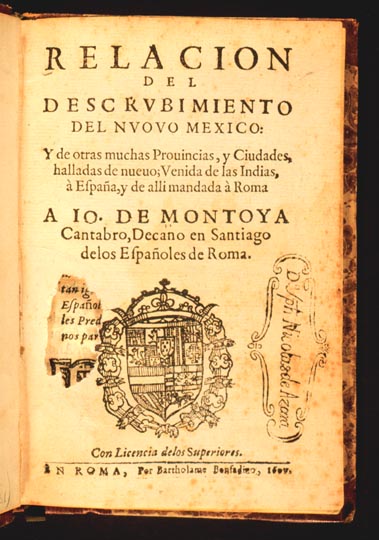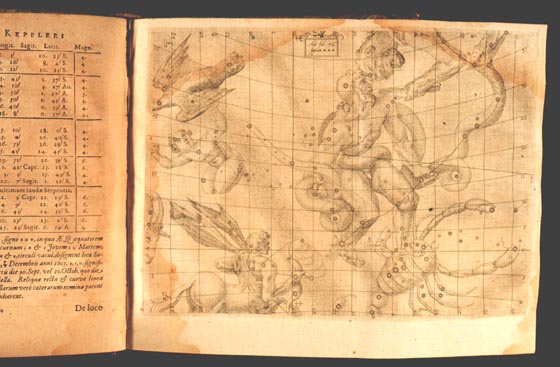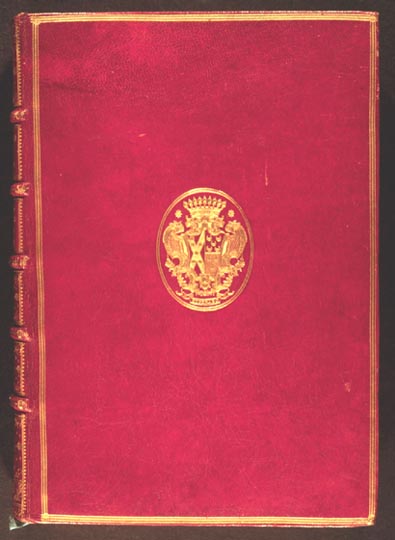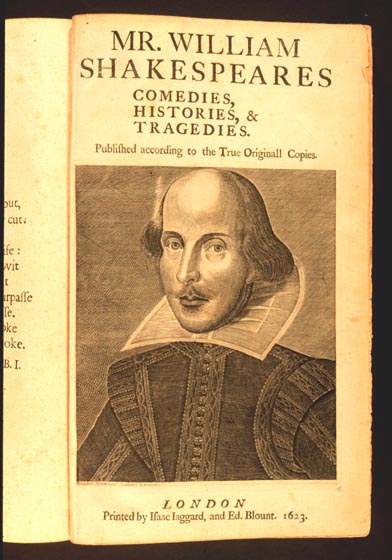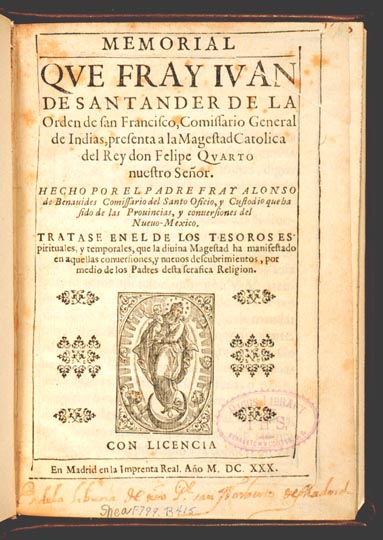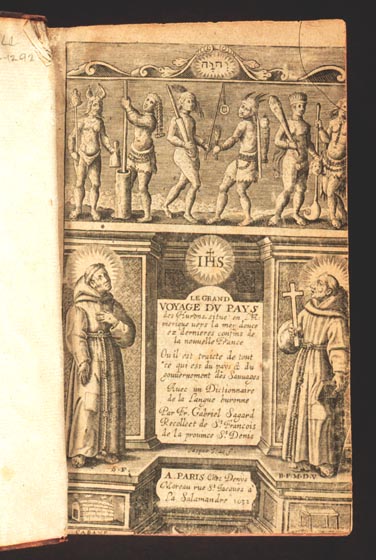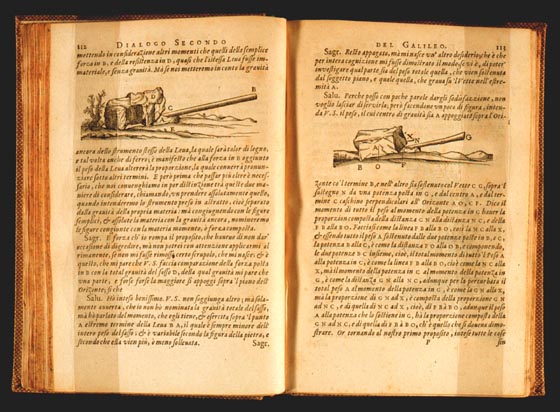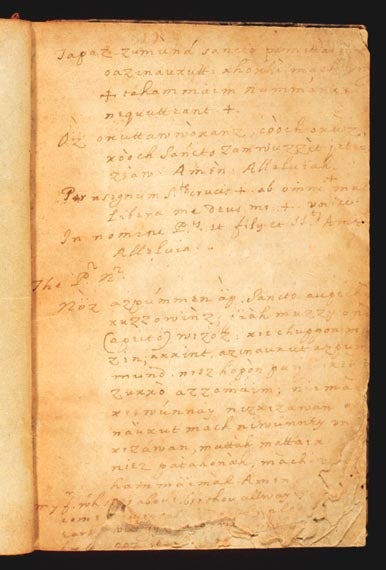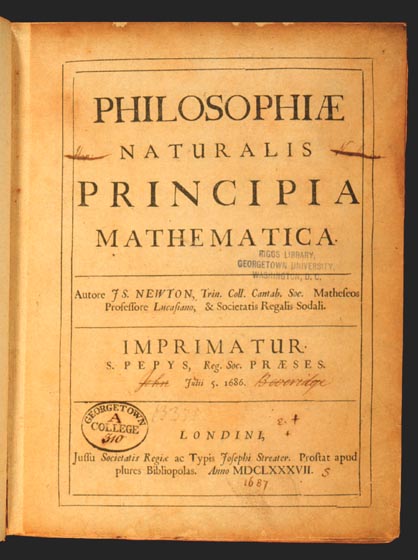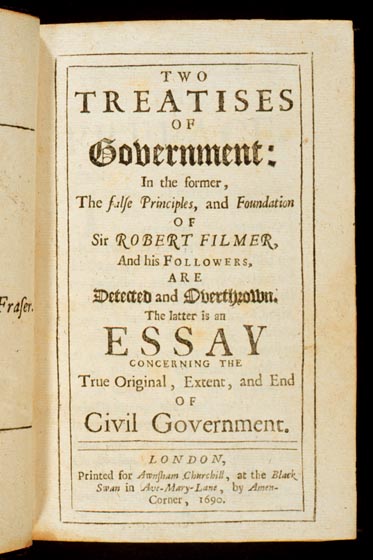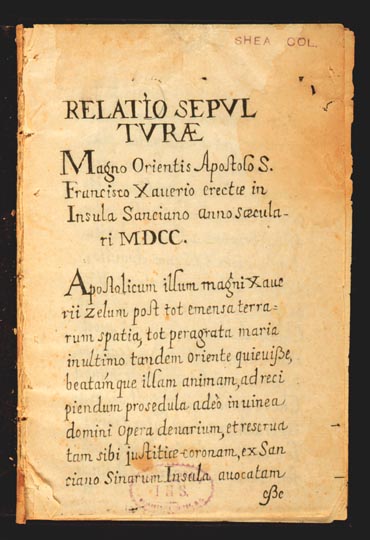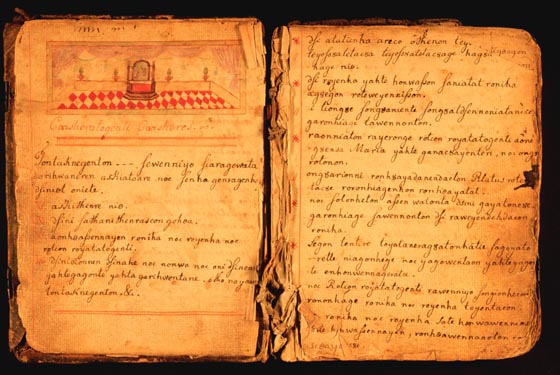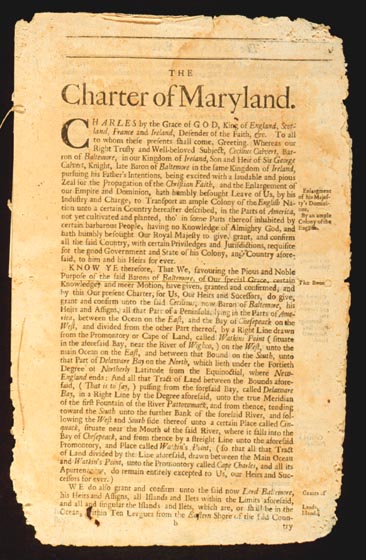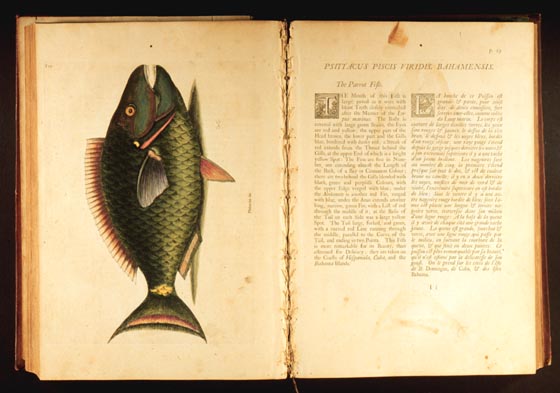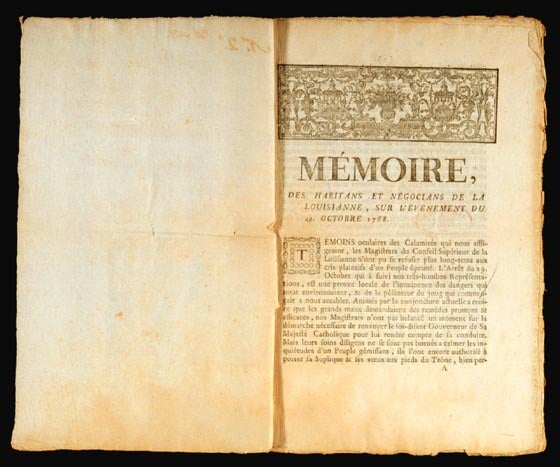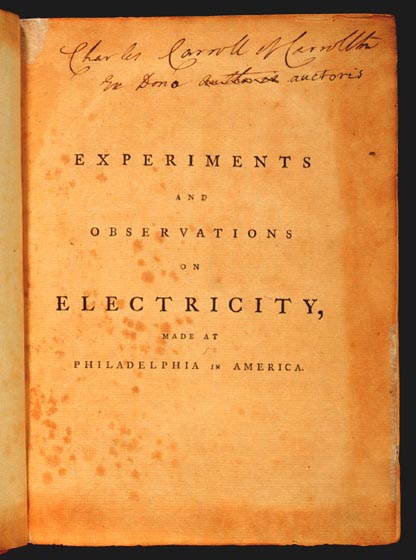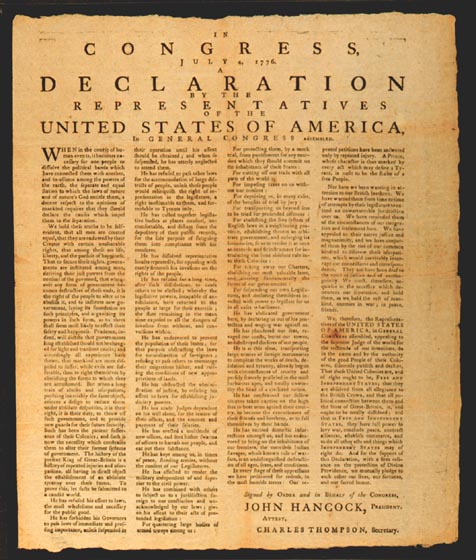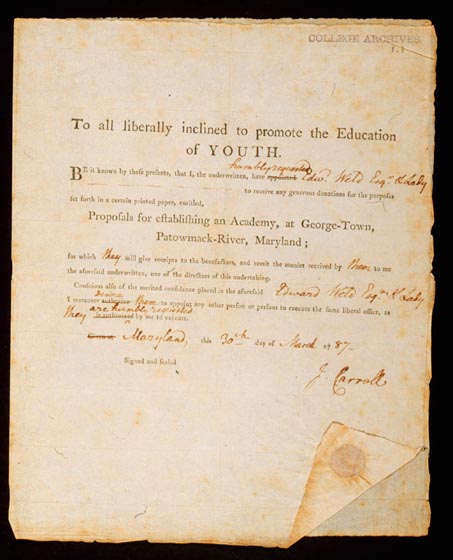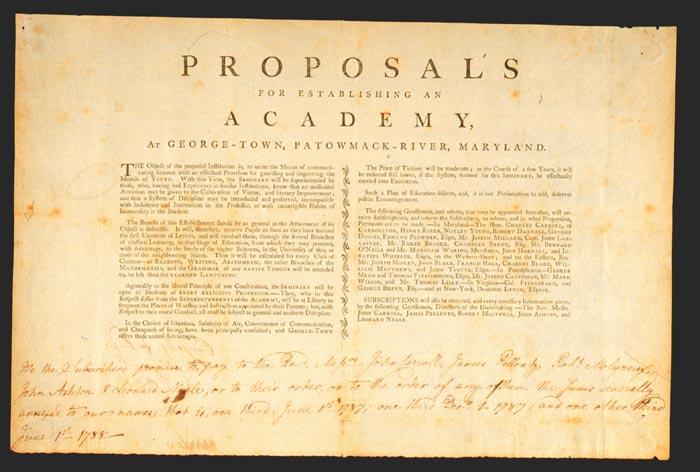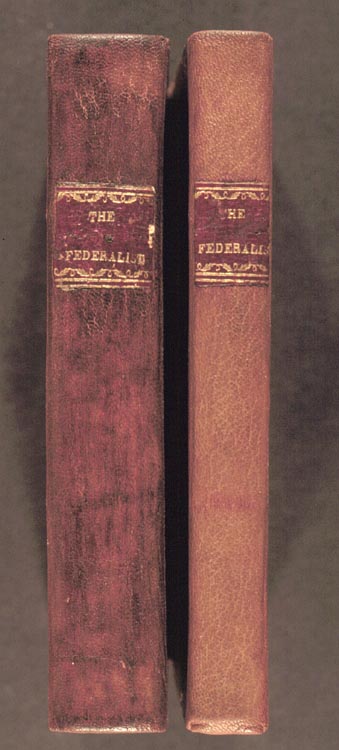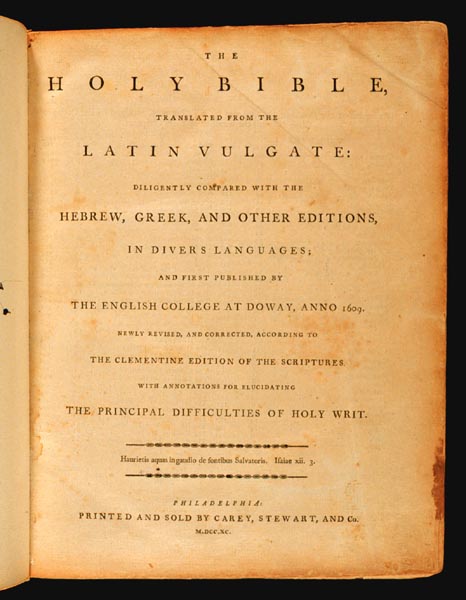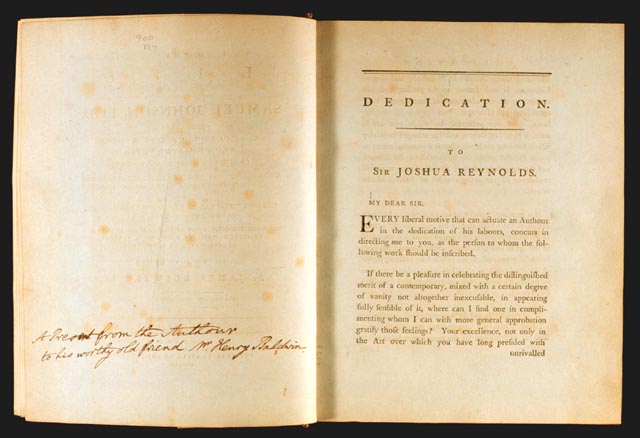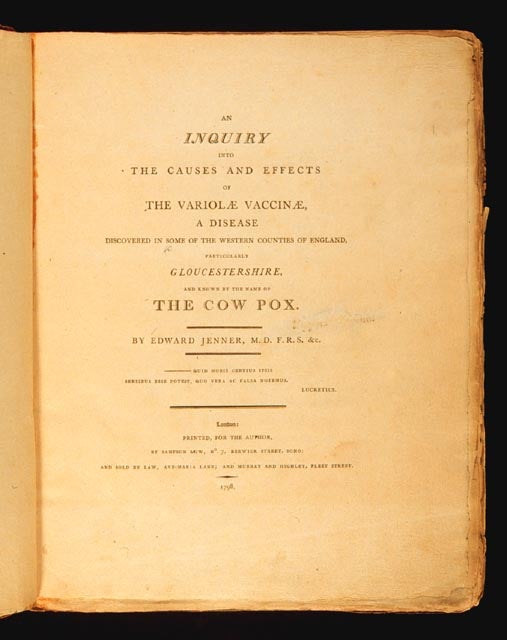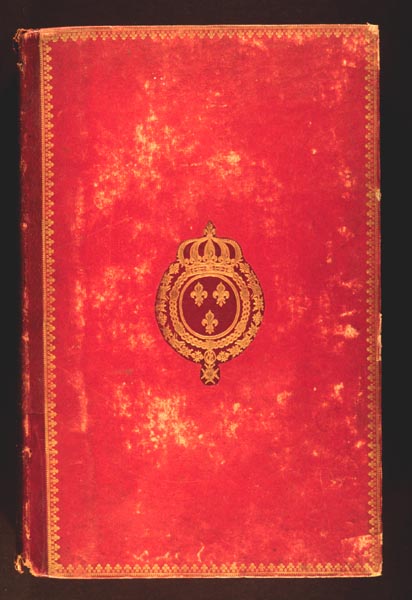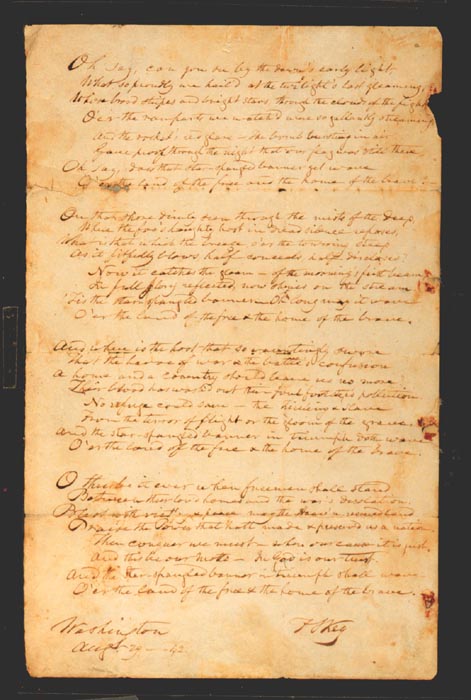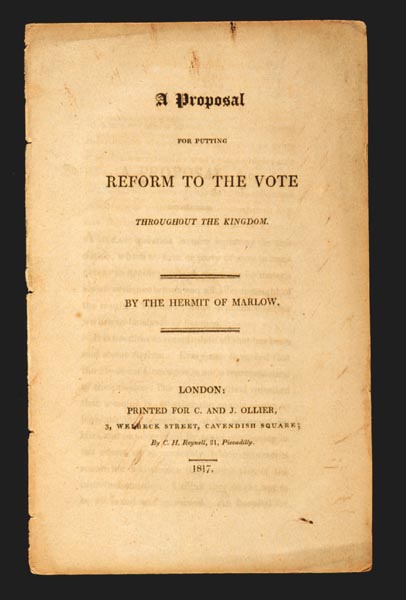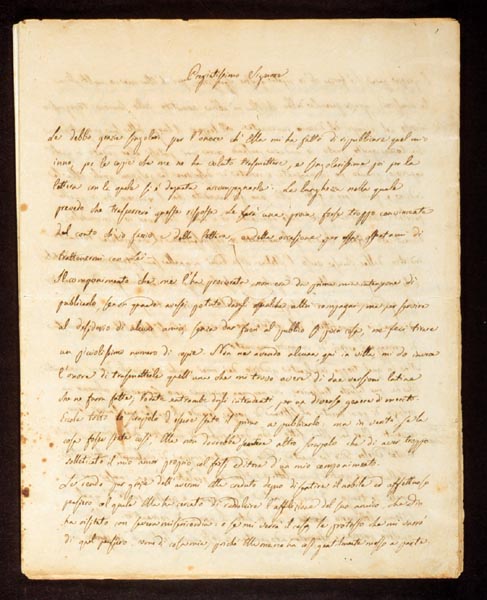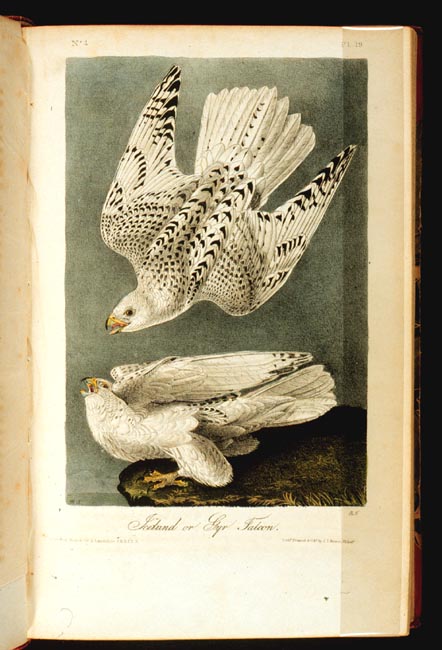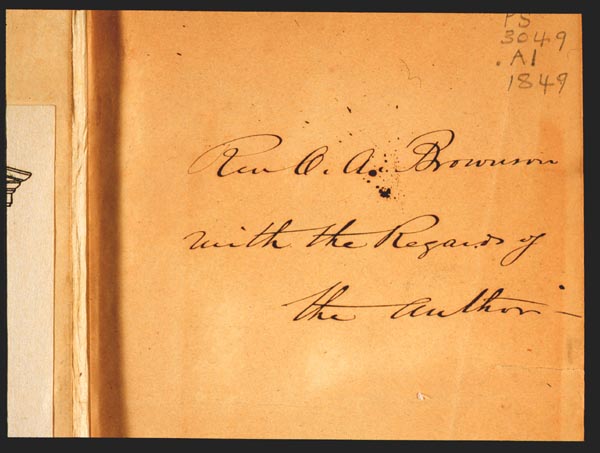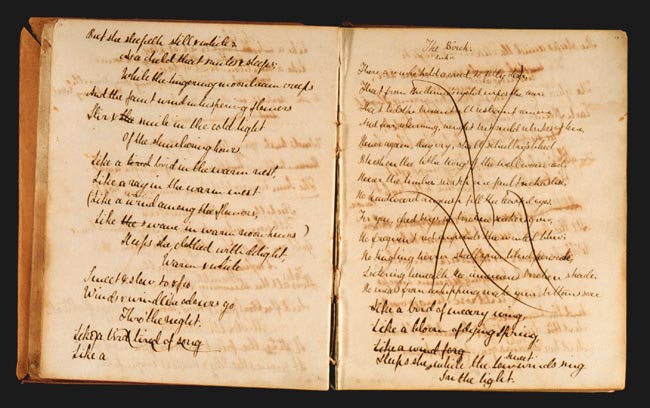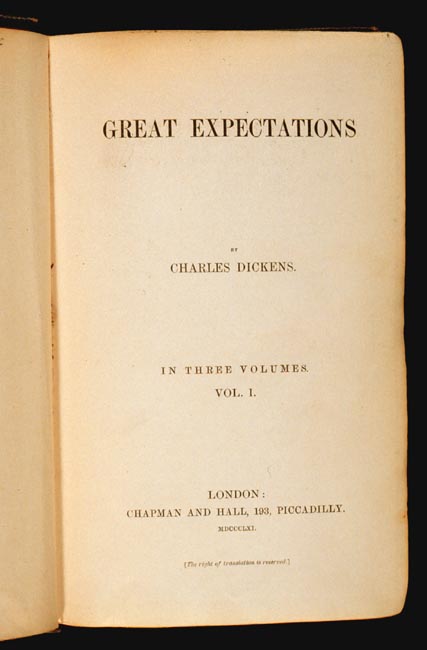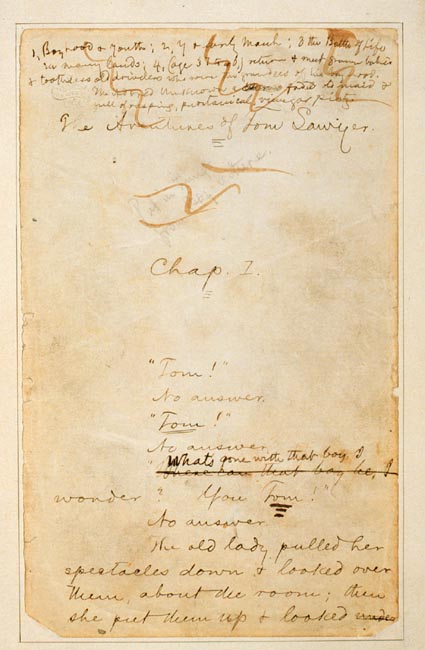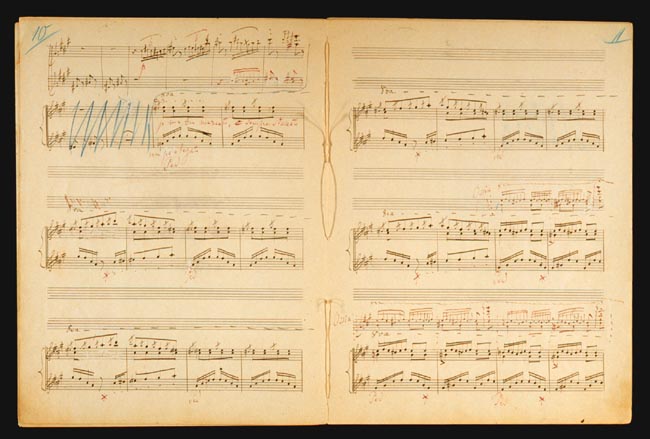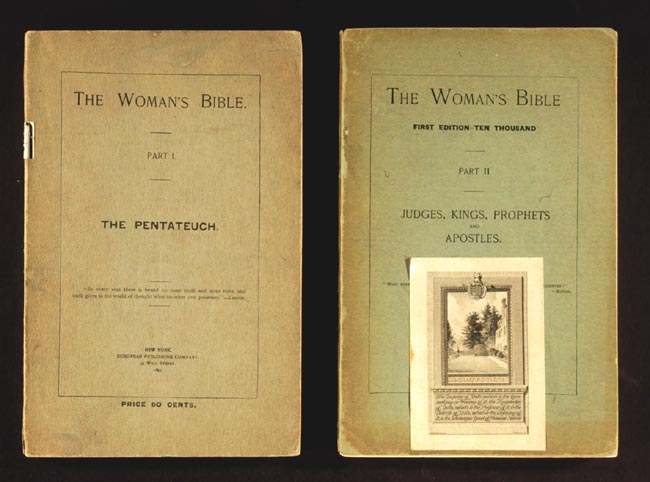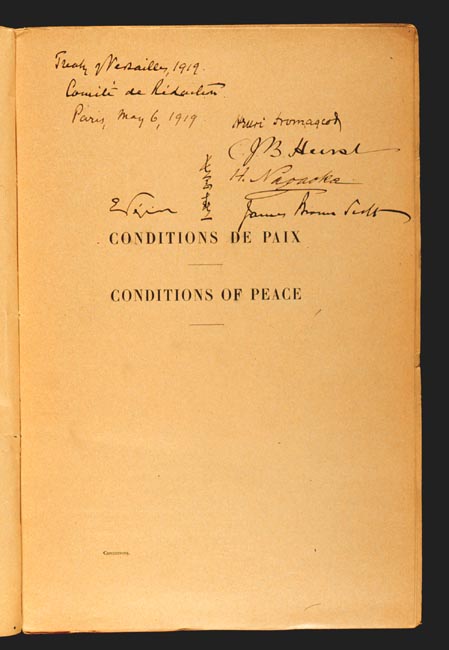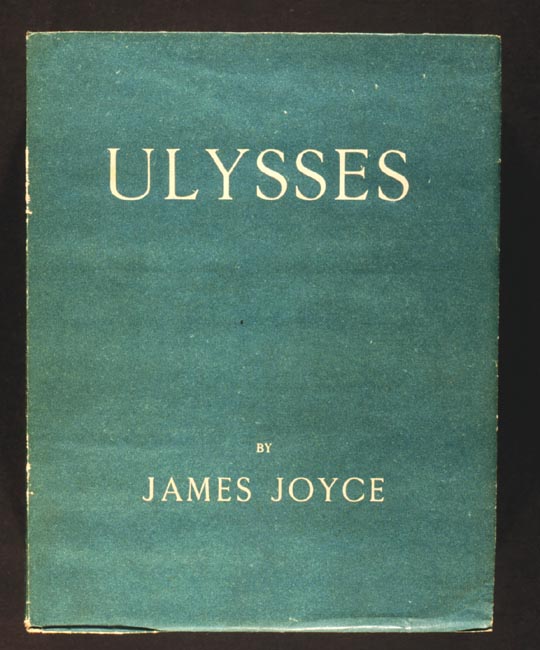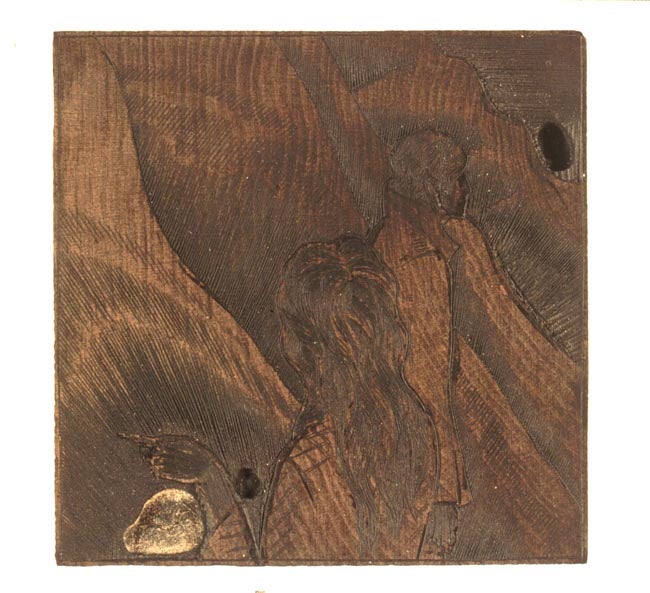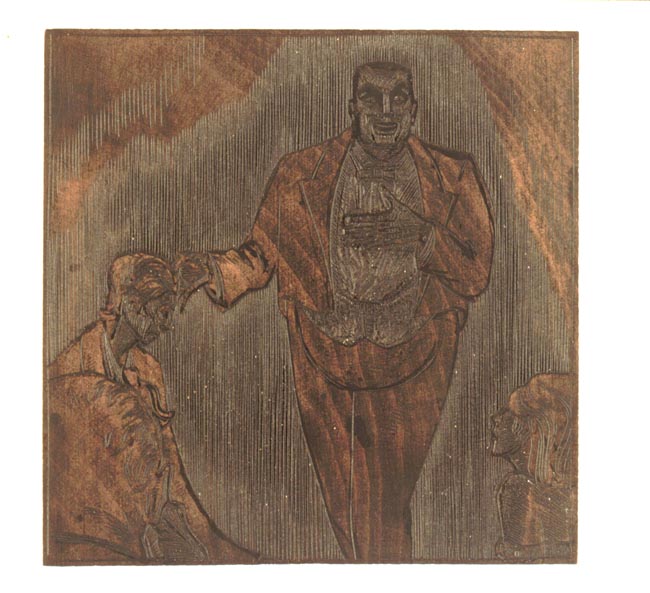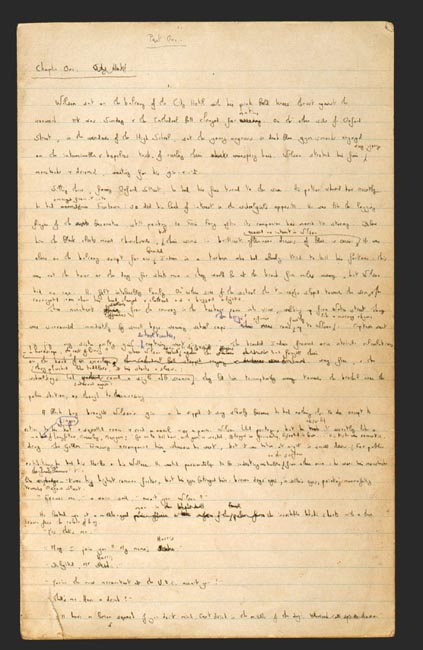Introduction: What is a Treasure?
The advent of a new millennium seems an auspicious time for a library to take stock of its collections. "Treasures of Lauinger Library" presents a significant number of those books, manuscripts, and works of art which demonstrate, visually and intellectually, what the library has attempted to do, and what it does, in bringing together, preserving, and making available for research at Georgetown University some portion of the historical record.
It is safe to say that all libraries of a certain age have treasures, and it is perhaps equally safe to say that by their treasures ye shall know them. A library's roster of special items will inevitably tell the observer a good deal about the library itself, and this is not at all a bad thing. In fact, the library which sets about marshaling a roster of its treasures for an exhibition such as this will, in the process, perhaps develop a better understanding of its own intrinsic character. Were different staff members than the curator of this exhibition to develop lists of Lauinger Library's bibliophilic treasures, their lists would certainly differ, but only up to a point. The history of collecting at Georgetown is permanently marked by some of the books, manuscripts, and artwork that have come to the university since its founding, and if some of these are perhaps the chiefest treasures, they also serve as objective pointers to whatever further selections might be thought of as expressing individual or curatorial preferences.
Georgetown is, first and foremost, a Catholic and Jesuit institution, and while other libraries do in fact own copies of the first edition of the Ratio studiorum or autographs of St. Ignatius Loyola, these items have a central importance to John Carroll's academy on the banks of the Potomac that they might well not have elsewhere. Equally, Georgetown is an American university, dating its foundation, like the federal government, from 1789; a July, 1776, broadside printing of the Declaration of Independence, a first edition of The Federalist, and a holograph manuscript of The Star-Spangled Banner occupy thereby obvious places of honor. Yet Georgetown is an American university in Washington, D.C., and thus it seems only natural that it should provide a home to volumes from the libraries of Thomas Jefferson and Charles Carroll of Carrollton, or to one remarkable volume presented by the stepson of George Washington on the occasion of his assisting at an early Georgetown commencement. Equally too, Georgetown's philosophical and educational outlook is resolutely international; that being the case, why not, therefore, should items printed in China and Japan or the manuscript of an Italian writer make "the list?" And Georgetown is itself: what more reason should be needed to include John Carroll's founding documents, the Proposals and fund-raising letter that antedate the foundation of the university itself?
But even when the relevancy of an item points to appropriate holding by a wider group of institutions than Georgetown (and Georgetown can hardly claim unique rights to all of the items in the preceding paragraph), there are considerations that make some items speak their virtues more clearly, and of these the most important is clearly provenance. A rapid look through the list that follows shows multiple entries from a few sources: the gifts of Mrs. Nicholas F. Brady, who placed at Georgetown the small collection of English literary highspots that her husband formed shortly before his death; the items which in their time were treasures at the University of Detroit; the splendid gifts made by autograph dealer Mary Benjamin in honor of Father Francis X. Talbot, S.J.; and paramount even to these the very extensive library and manuscript collection formed by American Catholic historian John Gilmary Shea, partly the gift of his widow and daughter. More than a single item could have been selected from the library numbering nearly 2,000 volumes formed by Father Thomas C. Levins (1789-1843), Georgetown's first officially designated librarian. Eric Menke's many donations might have yielded more than a single print, and by the same token the rich collection of musical manuscripts formed by Georgetown alumnus Leon Robbin, were it all currently at Georgetown, would certainly be represented by more than a single selection. These items, too, are near the heart of what Georgetown is or means to be.
Those other primary considerations, which include age, beauty, uniqueness, that perhaps most relative of all terms "importance," and all the other characteristics that gladden the hearts of both dealers and librarians, inevitably play their parts as well. Thus along with European incunabula we include an 8th century Japanese printed prayer scroll commissioned by the Empress Shotoku; books like Shaw's Picturesque Views of American Scenery, better known for their illustrations than for their text; items like the books by Boswell, Franklin, and Thoreau, whose human and historical associations single them out from the rest of the press runs of which they were part; and items like the First Folio, the texts by Galileo, Kepler, Locke, and Newton, the proof copy of the Treaty of Versailles, and The Woman's Bible, which express, in what seems to us the clearest possible way, that part of the historical experience which we have been enabled to make our own, whether in the hard or soft sciences, or literature, or the arts. Each makes its own claim to our attention, and each, too, is one of Georgetown's "treasures."
The library has never enjoyed an opulent budget for acquisitions, so it should come as no surprise that only 16 of the items in the exhibition can be proven to be purchases-and of these eight came with the library of John Gilmary Shea, which was sold to Georgetown in 1892 at an absurdly low price. But fully half of the items on display came as the result of gifts, from George Washington Parke Custis's presentation of the family copy of Catesby's Natural History in 1833 to Mrs. Thomas M. Evans's donation of the Willem Vrelant illuminated manuscript earlier this year. To all these donors the library owes a considerable debt of gratitude.
But one final observation is certainly in order, regarding the dates at which various items entered the library's collections. Georgetown began as a very small academy, then college: hard evidence, if not always elaborate records of provenance, tell us that three of the items in the exhibition were certainly here before 1836, and that another three certainly arrived between that date and 1868. The next century saw 30 items arrive (including eight among Shea's books and manuscripts). But since 1970, when the library began actively to collect rare books and manuscripts, another 20 have been added, including several of both the oldest and most recent items in terms of their individual dates of creation. The library is five years into its third century as the new millennium opens; the prospect of adding additional treasures in the years ahead, to put it very mildly indeed, does not displease.
George M. Barringer
Associate University Librarian, Special Collections and Archives
Early Japanese printing : [Wu kou ching kuang chin] [Dharani]
Nara: s.n.
ca. 764-770 A.D.
Transliteration into Chinese characters (by Mi T'o-shan, 705 A.D.) of a "charm" from the Sanskrit text Vimala Mirbhasa Sutra. One of four such charms printed on paper made from hemp at the order of the Japanese Empress Shotoku. With its original lathe-turned, whitened wood pagoda. Purchase, 1985, with the rare book collection of the University of Detroit.
Flemish Book of Hours
Bruges
ca. 1455-1460
Illuminated Manuscript
175 leaves, on vellum, in Latin.
[Horæ B. M. V.] An exceptional Book of Hours, with illuminations attributed to the Flemish artist Willem Vrelant (d. 1481), active in Bruges from the mid-1450s to the end of his career. The manuscript contains 12 full-page miniatures and 11 smaller depictions of saints in a separate section at the end; of special note is the "Holy Face" or "Salvator mundi" miniature after Jan van Eyck. Bound in nearly-contemporary full blind-embossed calf. Gift of Mrs. Thomas M. Evans, 2000.
The first book printed in Switzerland
Gregory I, Pope, Saint, ca. 540-604.
[Basel: Berthold Ruppel, not after 1468]
[Moralia, sive expositio in Job.] Beatus gregorius papa librum beati job petente sancto. First edition of Gregory's often reprinted work on the Book of Job, and generally regarded as the first book printed in Switzerland. Ruppel, the printer, had previously been an associate of Gutenberg. Bound in early 19th century half red morocco and marbled paper boards. Acquired from an undetermined source prior to 1970.
The first Euclid
Euclid
[Venice: Erhard Ratdolt, 1482]
Preclarissimus liber elementorum Euclidis perspicacissimi: in artem Geometrie incipit quã foelicissime. First edition of Euclid's Elements, not published in the original Greek until 1533. With ownership inscriptions of Philippus Romualdus Bissonius, 1742. Rebound in recent full calf. Acquired from an undetermined source prior to 1868.
The first Greek New Testament
Basel: Io. Froben [1516]
1516
Bible. New Testament. Greek and Latin. Erasmus. 1516. Novum instrumentum omne, diligenter ab Erasmo Roterodamo recognitum & emendatum. First edition of the first publication of the New Testament in the original Greek, together with Erasmus' own translation into Latin, with his extensive commentary. Bound in original alum-tawed pigskin over wooden boards, clasps lacking. Inscribed "Duplum Bibliothecae Regiae Monacensis" on front pastedown. Acquired with the library of Rev. Thomas C. Levins, 1844.
Utopia
More, Thomas, Sir, Saint, 1478-1535.
Louvain: T. Martin [1516]
Libellus vere aureus nec minus salutaris quam festivus de optimo reip. statu, deq: nova Insula Utopia. First edition of More's Utopia, one of only eight known complete copies. Rebound in later French (?) quarter red morocco and paper boards. Purchase, 1892, with the library of John Gilmary Shea.
"I have been like Esau. . ."
Francisco de Borgia, Saint, 1510-1572.
Autograph letter, signed. Oñate, 19 May [1551]. One page, in Spanish, mounted. An impassioned declaration of the writer's sinfulness and humility addressed to a group of fellow Jesuits in Portugal, saying in part "I have been like Esau, a mighty hunter, and chased not only birds, but souls, acting as a beater for the Devil." Gift of Mary Benjamin in honor of Father Francis X. Talbot, S.J., 1947.
The founder of the Society of Jesus
Ignatius, of Loyola, Saint, 1491-1556.
May 22, 1551
Document, signed. [Rome] 22 May 1551, one page, in Latin. A grant of faculties (or celebret) sent by the founder of the Society of Jesus to one of its early members, Fr. Leonard Kessel. A fragment of bone from the skeleton of Ignatius was added to the document at a later date. Gift of Mary Benjamin in honor of Father Francis X. Talbot, S.J., 1944.
With manuscript additions
Molina, Alonso de, d. 1585.
Mexico: En Casa de Antonio de Spinosa, 1571.
1571
Vocabulario en lengua castellana y mexicana. Two volumes bound in one. First edition of the first great Native American vocabulary, with contemporary manuscript additions to the first section in a second Native American language. First title leaf in facsimile. Bound in early (but probably not contemporary) full vellum (ties missing). Bookplate of Otto Orren Fisher. Purchase, 1971.
The Psalms in Scots polyphony
Wood, Thomas, 16th cent.
St. Andrews: Fife, 1586.
1586
Autograph illuminated manuscript, signed. 164 pages. The altus part from the second set of what is generally known as the "St. Andrews Psalter" or "Scots Psalter," Wood's compilation of the Psalms in English in four-part polyphonic settings by the Scots composer David Peebles; at the end are added a number of other religious and secular songs. Despite the date in the manuscript (given above), composition of the manuscript may perhaps have begun as early as 1570. Bound in somewhat later half calf and marbled paper boards. Acquired from an undetermined source prior to 1937.
The cities of the world
Braun, Georg, fl. 1593-1618.
[Cologne, 1576-1618]
1576-1618
Civitates orbis terrarum. Six volumes bound in two. First edition of the first great city atlas, this copy complete with all the plates in uncolored state. Bound in full calf, each volume bearing the gilt arms of French diplomat Gaspard Coignet de la Thuilerie, comte de Courson (1596/97-1653). Gift of an anonymous donor, 1976.
The foundation of modern ophthalmology
Bartisch, Georg, 1535-ca. 1607.
[Dresden: Gedruckt durch Matthes Stöckel, 1583]
1583
Das ist / Augendienst. First edition of the seminal work in ophthalmology. Bound in contemporary blindstamped pigskin over wooden boards, upper cover stamped with the date "1584" (clasps missing). Gift of Mrs. G. William Schlindwein, prior to1970.
A Jesuit education
Jesuits. Ratio studiorum. 1586.
Rome: In Collegio Societatis Iesu, 1586.
1586
Ratio atque institutio studiorum per sex patres ad id iussu R. P. Præpositi Generalis deputatos conscripta. First edition of the foundation work in Jesuit educational theory and practice. Bound in contemporary limp vellum, with the near-contemporary inscription on the title page of a Jesuit house in Bologna. From the collection of Sir Leicester Harmsworth. Purchase, together with the second edition (1591), on funds provided by Homer Hervey, Paul Straske, and Mrs. S. R. Straske, 1986.
New Mexico discovered
Montoya, Juan de, fl. 1602.
Rome: Por Bartholame Bonfadino, 1602.
1602
Relacion del descrubimiento del Nuovo Mexico: Y de otras muchas Provincias, y Ciudades, halladas de nuevo; Venida de las Indias, à España, y de alli mandada à Roma. First edition of this early account of the exploration of present-day New Mexico; one of only two recorded copies. Bound in the 19th century in three-quarter sheep and marbled paper boards. Acquired from an undetermined source prior to 1970, possibly with the library of John Gilmary Shea.
A "new star"
Kepler, Johann, 1571-1630.
Prague: Ex Officina calcographica Pauli Sessii, 1606.
1606
De stella nova in pede serpentarii, et qui sub ejus exortum de novo iniit, Trigono Igneo. First edition of a work dealing with the occurrence of a "new star" in 1604/5. Bound in 18th century half morocco and marbled paper boards. Gift of Lewis Strauss, 1985.
Jacobean Britain delineated
Speed, John, 1552?-1629.
London: To be sold by John Sudbury & Georg Humble, 1611.
1611
The Theatre of the Empire of Great Britaine: Presenting an Exact Geography of the Kingdomes of England, Scotland, Ireland, and the Iles adioyning: With The Shires, Hundreds, Cities and Shire townes, within ye Kingdome of England, divided and described. First edition of the first great English atlas. Rebound in recent full calf. Acquired from an undetermined source prior to 1909.
The La Vallière copy
Pinto, Fernão Mendes, d. 1583.
Lisbon: Por Pedro Crasbeeck, 1614.
1614
Peregrinaçam . . . em que da conta de muytas e muyto estranhas cousas que vio & ouuio no reyno da China, no da Tartaria, no do Sornau, que vulgarmente se chama Sião, no do Calaminhan, no de Pegù, no de Martauão, & em outros muytos reynos & senhorios das partes Orientals. First edition of this account of early travels in the Far East by an early associate of St. Francis Xavier. Bound in 18th century French red morocco, with the gilt super-ex-libris of the celebrated bibliophile Louis-César de la Baume Le Blanc, duc de La Vallière (1708-1780) on both boards. Purchase, 1985, with the rare book collection of the University of Detroit.
The First Folio
Shakespeare, William, 1564-1616.
London: Printed by Isaac Jaggard, and Ed. Blount, 1623.
1623
Mr. William Shakespeares Comedies, Histories, & Tragedies. Published according to the True Originall Copies. "First Folio" edition, first two leaves and final leaf in type facsimile, portrait on title leaf inset from a copy of the Fourth Folio; includes the first appearances in print of a number of Shakespeare's plays. Bound in full 19th century "pale Russia" (boards detached). Bookplate of Lucy Wharton Drexel (ca. 1888). Purchase, 1964.
Life in colonial New Mexico
Benavides, Alonso de, fl. 1630.
Madrid: En la Imprenta Real, 1630.
Memorial que Fray Iuan de Santander de la orden de san Francisco, Comissario General de Indias, presenta a la Magestad Catolica del Rey don Felipe Quarto nuestro Señor. Hecho por el Padre Fray Alonso de Benavides Comissario del Santo Oficio, y Custodio que ha sido de las Provincias, y conversiones del Nuevo-Mexico. First edition of the most important contemporary account of life in the American Southwest during the early colonial period. Rebound in recent full calf. Purchase, 1892, with the library of John Gilmary Shea.
Life and language in colonial Canada
Sagard-Théodat, Gabriel.
Paris: Chez Denys Moreau, 1632.
1632
Le grand voyage du pays des Hurons. . . . Avec un Dictionnaire de la langue huronne. First edition of this primary work on the civilization and language of the Hurons, the principal Native American tribe encountered by the French in Canada. Although the dictionary was set up in type separately, both works are covered by the same official permission to publish, and the two works are here bound together, as usual, in the original speckled sheepskin. With the ownership inscription of the American historian Edmund Bailey O'Callaghan. Purchase, 1892, with the library of John Gilmary Shea.
Galileo's discourses
Galilei, Galileo, 1564-1642.
Leiden: Appresso gli Elsevirii, 1638.
1638
Discorsi e dimostrazioni matematiche, intorno à due nuove scienze Attenenti alla Mecanica & i Movimenti Locali. First edition of the Italian scientist's foundational work on mechanics and dynamics. Rebound in 20th century German (?) coarse buckram; bookplate of Hans Ludendorff. Gift of Lewis Strauss, 1985.
Manuscript prayers in Piscataway
[White, Andrew, 1579-1656 (association)]
Douai: L. Kellam, 1610.
Manuale sacerdotum hoc est, ritus administrandi sacramenta. The printed text is that of a popular work on the administration of the sacraments. At the front, there are found five pages of manuscript prayers written between 1634 and 1640 in English, Latin, and Piscataway (Conoy), the language of the Native Americans living in the vicinity of present-day Washington, D.C., in the hand of Fr. Andrew White, S.J., the first Catholic missionary to the Maryland colony. Rebound in quarter sheep and paper boards, probably at Georgetown, in the 19th century. Brought from the Jesuit residence at Leonardtown, Maryland, to the University Archives in 1953.
The Principia mathematica, 1687
Newton, Isaac, Sir, 1642-1727.
London: Jussu Societatis Regiæ ac Typis Josephi Streater, 1687.
1687
Philosophiæ naturalis principia mathematica. First edition of the cornerstone work in traditional physics. Rebound in 20th century full calf. Early ownership signature of John Beveridge, slightly later signature of Fr. Henry Neale, S.J., active in Philadelphia from 1740 to 1748. Acquired, probably as the gift of a Jesuit house or an individual Jesuit, prior to 1836; with the alphanumeric pressmark of the original Georgetown College Library collection on the title page.
Locke on government
Two Treatises of Government. First edition of one of the key titles in the development of modern, and especially American, political science. Bound in original (?) full calf. In part, unopened (and therefore in part unread). Early ownership inscription of J. Langston; 20th century bookplate of Henry G. Burke, Baltimore. Purchase, 1983.
The burial of St. Francis Xavier
[Castner, Gaspar, 1665-1709]
[Beijing?: s.n., 1700]
1700
Relatio sepulturæ magno orientis apostolo S. Francisco Xauerio erectæ in insula Sanciano anno sæculari MDCC. First edition of Castner's account of the burial of St. Francis Xavier in China. Printed in the manner of a traditional Chinese block-book, the Latin characters and illustrations cut in relief on wooden blocks. Purchase, 1892, with the library of John Gilmary Shea.
Hymns among the Mohawks
[Bruyas, Jacques, 1635-1712]
Untitled autograph (?) manuscript. Caughnewaga or Sault St. Louis (Canada), ca. 1700, about 75 leaves (including some fragmentary), in Mohawk, with a few notes in Latin and French. Attributed with some confidence to the Jesuit missionary Bruyas, the author of a scholarly treatise on Mohawk vocabulary. This manuscript, in all likelihood incomplete, contains a fragmentary liturgy of parts of the Mass followed by extensive translations into Mohawk of traditional Latin and French hymns. Bound in deerskin (?) with metal clasps. Part of the collection of manuscripts formed by John Gilmary Shea; gift of Sophie S. Shea and Elizabeth Shea, 1893.
The first printed Maryland charter
Maryland. (Colony). Charter.
[Annapolis: Reading, 1706 or 1707]
1706 or 1707
The Charter of Maryland. First printing, slightly imperfect, with small portions of text on the last two leaves missing. Stitched (as issued?), and docketed on the final blank leaf by Fr. William Hunter, S.J. (1659-1723), superior of the Maryland Jesuit mission at least from 1696 until his death. The only known copy. Deposited at Georgetown with the archives of the Maryland Province of the Society of Jesus, 1975.
The Custis (Washington) family copy
Catesby, Mark, 1683-1749.
London: Printed at the Expence of the Author, 1731-43.
1731-1743
The Natural History of Carolina, Florida and the Bahama Islands: Containing the Figures of Birds, Beasts, Fishes, Serpents, Insects, and Plants: . . . not hitherto described, or very incorrectly figured by Authors. . . . Vol. I [II] Two volumes bound in one. First edition, a small number of plates wanting. With the signature on the first title leaf of John Custis of Williamsburg, with whom Catesby stayed briefly while doing the field work on which the book is based, and from whom the book passed to Martha Custis Washington. Bound (or perhaps rebound) at Georgetown College in full calf in the mid-19th century. Gift of George Washington Parke Custis on the occasion of his addressing a Georgetown College commencement, July 4, 1833.
Early printing in New Orleans
[A La Nlle. Orléans: Chez Denis Braud, Imprimeur du Roi, 1768]
1768
Mémoire, des habitans et negocians de la Louisianne, sur l'événement du 29. octobre 1768. First edition of the first book printed in Louisiana, a petition asking the restoration of the colony to France; authorship sometimes attributed to Nicolas Chauvin de Lafrénière (d. 1769) or to Julien Doucet. Imprint reproduced from the colophon. Original plain wrappers, with an official French manuscript attestation to the document's authenticity, dated 6 October 1769, on the final leaf. The only copy recorded in the United States. Purchase, 1892, with the library of John Gilmary Shea.
A presentation Franklin
Franklin, Benjamin, 1706-1790.
London: Printed for F. Newbery, 1774.
1774
Experiments and Observations on Electricity, Made at Philadelphia in America. . . . The Fifth Edition. The most complete edition of Franklin's scientific treatise. Inscribed on the half-title, in the hand of the recipient, "Charles Carroll of Carrollton Ex Dono Authoris [scratched out] auctoris." Bound in original full sheep (rebacked). Purchase, 1892, with the library of John Gilmary Shea.
A broadside Declaration of Independence
[Salem, Massachusetts: E. Russell (?), 1776]
U.S. Declaration of Independence. In Congress, July 4, 1776. A Declaration by the Representatives of the United States of America, in General Congress Assembled. One of the earliest regional printings of the Declaration, this the "unofficial" (and probably earlier) of two Salem printings, and the only one presented in four-column format. One of very few known copies. Acquired by the University Archives from an undetermined source prior to 1970.
The "Crewe" manuscript
Sheridan, Richard Brinsley Butler, 1751-1816.
London, 1777(?)
The School for Scandal A Comedy. Manuscript, signed. 173 leaves. Copyist's manuscript of Sheridan's comedy, with numerous notes and corrections throughout in the author's own hand, including attributions of the prologue to David Garrick and the epilogue to George Colman, and with his presentation inscription to Mrs. (afterwards Lady) Crewe and signature on the title leaf. Bound in contemporary three-quarter red morocco and marbled paper boards. Bookplates of F. A. Crewe (after 1806) and Nicholas F. Brady. Gift of Mrs. Nicholas F. Brady, 1935.
Raising money for Georgetown
Carroll, John, 1735-1815.
[Baltimore?: s.n., 1787]
"To all liberally inclined to promote the Education of Youth." First printing of the future Archbishop Carroll's letter soliciting funds for his projected academy at Georgetown, accomplished in manuscript and directed to Edward Weld and his wife at their estate, Lulworth, near Wareham, in Dorset. The only known copy. Acquired by the University Archives from an undetermined source prior to 1970.
"Students of every religious persuasion"
[Carroll, John, 1735-1815]
[Baltimore?: s.n., 1787]
"Proposals for Establishing an Academy, at George-Town, Patowmack-River, Maryland." First printing of the foundation document of Georgetown University, including the typically American wording "Agreeably to the liberal Principle of our Constitution, the Seminary will be open to Students of every religious persuasion." One of the copies distributed in the United States by Carroll: ironically, the recipient docketed the back "Prospectus for building The College of G. T.-- useless." Acquired by the University Archives from an undetermined source prior to 1970.
A new form of government
New-York: Printed and Sold by J. and A. M'Lean, 1788.
1788
The Federalist: A Collection of Essays, Written in Favour of the New Constitution. . . . In Two Volumes. First edition of a key document in the struggle for acceptance of the new Federal Constitution. Bound in original full sheep (rebacked). Gift of Charles H. Trunnell, 1892.
The first national Thanksgiving
Washington, George, 1732-1799.
[New York: Childs and Swain (?), 1789]
By the President of the United States of America. A Proclamation. First printing of the broadside proclaiming the first national day of Thanksgiving. One of only six recorded copies. Presented as the Georgetown University Library's official 2,000,000th volume; gift of Marshall Coyne, 1994.
The first American Catholic Bible
Bible. English. Douai. 1790.
Philadelphia: Printed and Sold by Carey, Stewart, and Co., 1790.
The Holy Bible, Translated from the Latin Vulgate: Diligently Compared with the Hebrew, Greek, and Other Editions, in Divers Languages; and First Published by the English College at Doway, Anno 1609. Newly Revised, and Corrected, According to the Clementine Edition of the Scriptures with Annotations for Elucidating the Principal Difficulties of Holy Writ. First edition of the first Catholic Bible printed in America. Rebound in 20th-century full black morocco. Purchase, 1892, with the library of John Gilmary Shea.
A presentation Boswell
Boswell, James, 1740-1795.
London: Printed by Henry Baldwin, for Charles Dilly, 1791.
The Life of Samuel Johnson, LL.D. Two volumes. First edition A presentation copy from the author to the printer of the work, inscribed by Boswell on the verso of the title page of the first volume "A Present from the Authour to his worthy old friend Mr. Henry Baldwin." Rebound by Riviere in full maroon straight-grained morocco. Bookplates of Nicholas F. Brady in each volume. Gift of Mrs. Nicholas F. Brady, 1935.
The end of smallpox
Jenner, Edward, 1749-1823.
London: Printed, for the Author, by Sampson Low. 1798.
An Inquiry into the Causes and Effects of the Variolæ Vaccinæ. First edition of one of the noteworthy books in the development of modern medicine. Bound in contemporary marbled paper boards, cloth spine (possibly rebacked at a slightly later date). Gift of Mrs. G. William Schlindwein, prior to 1970.
A sammelband from Jefferson's library
[Jefferson, Thomas, 1743-1826 (association)]
A bound volume of works on medical subjects from the library of Thomas Jefferson, comprising the following:
Rush, James, 1786-1869. An Inquiry into the Use of the Omentum. Philadelphia: From the Press of T. & G. Palmer, 1809.
Ricketson, Shadrach. A Brief History of the Influenza, Which prevailed in New-York in 1807. [New York, 1808]
Inscribed on the (trimmed) title leaf "From the Auth[or]"
College of Physicians of Philadelphia. Additional Facts and Observations Relative to the Nature and Origin of the Pestilential Fever. Philadelphia: Printed by A. Bartram, for Thomas Dobson, 1806. Inscribed by Jefferson with his characteristic "T." before signature mark I on page 57.
Devèze, Jean, 1753-1829. Dissertation sur la fièvre jaune qui régna à Philadelphie en 1793. Paris: Imprimerie de Madame Huzard, An XII [1804]
Inscribed on the title page: "presenté a son excellence Monsieur Jefferson president des etats unis, avec la plus haute véneration de la part de l'auteur = Deveze."
[The Philadelphia Medical Museum. New Series. Conducted by John Redman Coxe, M. D. Vol. I. Philadelphia: Printed and Published by J. & A. Y. Humphreys, 1811]
Pages 165-176 only, extracted from the complete volume, containing principally an account of "the Tranquillizer," a chair for restraining the violent insane.
Royal Humane Society. Annual Report, 1807. By W. Hawes, M. D. London: Printed for the Society, by J. Nichols and Son [1808?] No copy of this report recorded in OCLC.
Stuart, Josephus Bradner. An Inaugural Essay, Containing Experiments and Observations in Defence of the Doctrine of Cutaneous Absorption. Albany: Printed by R. Packard, 1810.
Inscribed on the title page: "The Honorable Thomas Jefferson / Monticello / Virginia." And on the verso of the title page: "To, The Honorable Thomas Jefferson, with the compliments of the Author. 19th Dec. 1810."
Clark, Micajah, 1787?-1849. An Inaugural Dissertation on Lithotomy. Philadelphia: Printed by Jane Aitken, 1811.
Crawford, John, 1746-1813. A Lecture, Introductory to a Course of Lectures on the Cause, Seat and Cure of Diseases. Baltimore: Published by Edward J. Coale, Benjamin Edes, printer. 1811.
Various typographical and grammatical emendations throughout in Jefferson's hand.
Rose, Henry, fl. 1794. An Inaugural Dissertation on the Effects of the Passions upon the Body. Philadelphia: Printed by William W. Woodward, 1794.
Printed dedication to Jefferson on page [7] and with a few typographical and grammatical emendations in Jefferson's hand.
This volume of pamphlets and a single periodical extract is recorded in the list of Jefferson's "second library" as "Medecine 199." Bound in old half leather and marbled paper boards. Gift of the estate of Mangum Weeks, 1982.
Egypt described
Paris: De l'Imprimerie Impériale, 1809-28.
France. Commission des monuments d'Égypte. Description de l'Égypte, ou Recueil des observations et des recherches qui ont été faites en Égypte pendant l'expédition de l'armée française, publié par les ordres de sa majesté l'empereur Napoléon le grand. 29 volumes. First edition of the account of one of the most ambitious scientific projects undertaken up to that time. An all-but-complete set (lacking only two small plates out of 883), presented to Bernard Drovetti (1776-1852), French consul general in Egypt, 1802-14 and 1821-26. In the original bindings, mostly of half red calf and boards gilt with the royal arms, Tessier's ticket at the front of a volume of plates of antiquities. Gift of Francine Buffet Johnson and Alfred Grima Johnson, 1993.
The Star-Spangled Banner
Key, Francis Scott, 1779-1843.
Washington, D.C., 29 August 1842
[The Star-Spangled Banner]. Autograph manuscript, signed. 1 page. A fair copy, one of very few such extant, of the untitled text of the national anthem which Key composed in 1814, written out by the author for a Thomas Steven Espy. Gift of the recipient's daughter, Elizabeth McCalmont Espy Nunn (Mrs. J. A. Nunn), 1897.
The "Hermit of Marlow" on reform
[Shelley, Percy Bysshe, 1792-1822]
London: Printed for C. and J. Ollier, 1817.
A Proposal for Putting Reform to the Vote Throughout the Kingdom. By the Hermit of Marlow. First edition of the poet's anonymously-distributed contribution to the ongoing debate on English political reform springing from both the nascent Industrial Revolution and the previous two and a half decades of political upheaval in France. Disbound. Acquired from an undetermined source prior to 1970.
American scenery, in color
Shaw, Joshua.
Philadelphia: Published by M. Carey & Son, 1820-21.
Picturesque Views of American Scenery: Engraved by Hill, from Drawings by Joshua Shaw, Landscape Painter. No. I [II-III] Three volumes. First edition of one of the earliest American color-plate publications. Bound in the original paper wrappers, now detached. Acquired from an undetermined source prior to 1970.
Romanticism in Italy
Manzoni, Alessandro, 1785-1873.
Brusuglio: presso a Milano, 22 September 1823.
Autograph letter, signed. 18 leaves (35 pages), in Italian. The original draft of Manzoni's celebrated essay on Romanticism in Italy, as sent to his friend Cesare d'Azeglio. The work became widely popular following its unauthorized first printing (in Paris, from a very imperfect copy of this letter) in 1846. Acquired by the Woodstock College Library some time before 1882 and deposited at Georgetown with the archives of the Woodstock Theological Center, 1976.
Audubon's birds in octavo
Audubon, John James, 1785-1851.
New York: Published by J. J. Audubon; Philadelphia: J. B. Chevalier, 1840-44.
The Birds of America, from Drawings Made in the United States and Their Territories. Seven volumes. First octavo edition, lacking four plates. Bound in three-quarter red morocco and marbled paper boards, very likely in the Georgetown College bindery. Acquired from an undetermined source (but most likely purchased) prior to 1868.
Thoreau to O. A. Brownson
Thoreau, Henry David, 1817-1862.
Boston and Cambridge: James Munroe and Company, 1849.
A Week on the Concord and Merrimack Rivers. First edition of the author's first book, inscribed by him on the front free endpaper: "Rev O. A. Brownson with the Regards of the author." After page 272 the text is unopened and therefore unread. Bound in the original cloth (rebacked). Purchase, 1985, with the rare book collection of the University of Detroit.
Early poems by A. C. Swinburne
Swinburne, Algernon Charles, 1837-1909.
[Oxford? ca. 1858-59?]
Poems. Autograph manuscript. 180 pages (on 91 leaves). Octavo-sized notebook containing drafts of a number of short poems, many only partial; parts of a long drama in verse about the Borgias and Paolo Orsini; and the beginning of a prose story concerning flagellation, all probably written during the latter years of the poets's course of study at Oxford. Bound in flexible black morocco gilt. Gift of Edith S. Mayfield, 1984.
Great Expectations in the original cloth
Dickens, Charles, 1812-1870.
London: Chapman and Hall, 1861.
Great Expectations by Charles Dickens. In Three Volumes. Vol. I. [II-III] Three volumes. First edition, the true first printing of Dickens' only "three-decker." Bound in the original (much faded) violet cloth, lending library labels removed from the upper cover of each volume. Gift of Mary Ziegler Fockler, 1976.
Tom Sawyer
Twain, Mark, 1835-1910.
Hartford, 1873-76, ca.
The Aventures [sic] of Tom Sawyer. Autograph manuscript. 900 leaves. The original manuscript of Twain's novel, as sent for type-setting to the printer of the American first edition, including as a final afterthought in September, 1876, the wording for the book's dedication. Gift of Mrs. Nicholas F. Brady, 1934.
Liszt's virtuosity
Liszt, Franz, 1811-1886.
[Weimar, 1883]
Mephisto Polka. Copyist's manuscript, signed. 18 pages. Apparently the final working draft of the Polka (a companion piece to the more famous "third" Mephisto Waltz published with it), with numerous autograph corrections and a virtuosic "ossia" part invented for the right hand nearly throughout. Signed and inscribed by the composer to one of the most devoted, if least talented, of his students, Fräulein Lina Schmalhausen, on the first page. Gift of Leon Robbin, 1996.
"Progress is the victory of a new thought. . ."
Stanton, Elizabeth Cady, 1815-1902.
New York: European Publishing Company, 1895-1898.
The Woman's Bible. Part I. The Pentateuch. [Part II: Judges, Kings, Prophets and Apostles.] Two volumes. First edition of this controversial attempt to overthrow the political and domestic subjugation of women as based on Biblical texts. Bound in the original paper wrappers, the bookplate of Margaret F. G. Whitney mounted on the cover of the second part. The first part is inscribed on a front binder's blank by Elizabeth Cady Stanton: "June 25, 1898 / Progress is the victory of a new thought, over an old superstition." Acquired from an undetermined source prior to 1970.
The Versailles Treaty, inscribed
[Paris? s.n., 1919]
Allied and Associated Powers (1914-1920). Conditions de paix. Conditions of peace. Proof copy (upper wrapper stamped "Epreuve" with a numeral 5 added by hand) of the text of the Treaty of Versailles. With the separately printed Summary laid in at the back. Bound in the original paper wrappers. Autographed on the title leaf by four of the five original members of the Comite de Redaction (Central Drafting Committee), May 6, 1919, comprising Henri Fromageot (France, chairman), J. B. Hurst (British Empire), H. Nagaoka (Japan), and James Brown Scott (USA). Gift, together with the papers of James Brown Scott, of Eleanor Finch, 1968.
Partly unread in the original wrappers
Joyce, James, 1882-1941.
Paris: Shakespeare and Company, 1922.
Ulysses. First edition of the novel which effectively reshaped the future of serious English literature. Copy #602 of 1,000 (one of 750 on handmade paper). Bound in the original blue paper wrappers. In large part unopened (and therefore in large part unread). Purchase, 1972.
The original blocks
Ward, Lynd, 1905-1985.
[New York: Jonathan Cape and Harrison Smith, 1929.]
[Gods' Man.] A pair of the original wood blocks for the first of the artist's "woodcut novels," actually narratives without words produced by the process of woodengraving. Part of a gift by the artist's daughters of the complete set of blocks from which the signed, limited first edition of the novel was printed. Gift of Nanda Ward and Robin Ward Savage, 1998.
M. C. Escher, printed by himself
Escher, M. C., 1898-1972.
April, 1935.
Wood engraving
Dream (Mantis religiosa). Signed. One of the best-known and, to many, one of the most puzzling of the artist's early prints. This particular copy was the first print Escher sold in the United States, from his first show at the Whyte Gallery in Washington, D.C., a few years before World War II. Dated in the block. Signed in pencil at lower left and inscribed "Eigen druck" at lower right. Bequest of the original purchaser, Eric F. Menke, 1981.
The Heart of the Matter
Greene, Graham, 1904-1991.
London, 1946-47
The Heart of the Matter. Autograph manuscript. 175 pages. The original draft of one of the author's most famous novels, presented by him to Catherine Walston and acquired with the entirety of Greene's letters to her and attendant manuscripts and other items. Purchase, 1990.
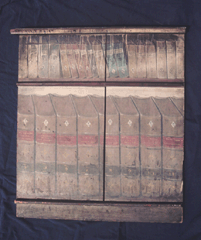
The Library Door
Simpson, James Alexander, 1805-1880.
Georgetown, ca. 1831.
33.75 x 29.5 inches.
Oil on wooden panel. The surviving fragment of the painted door created by Simpson, Georgetown's first teacher of fine arts, for the "new" college library in the Old North Building. Names of Jesuits then teaching at Georgetown grace the folio tomes on the bottom shelf, each allied to the person's academic specialty; the florid penmanship of James Van de Velde, S.J., the librarian, is no doubt the reason for his "authorship" of the tome on calligraphy.


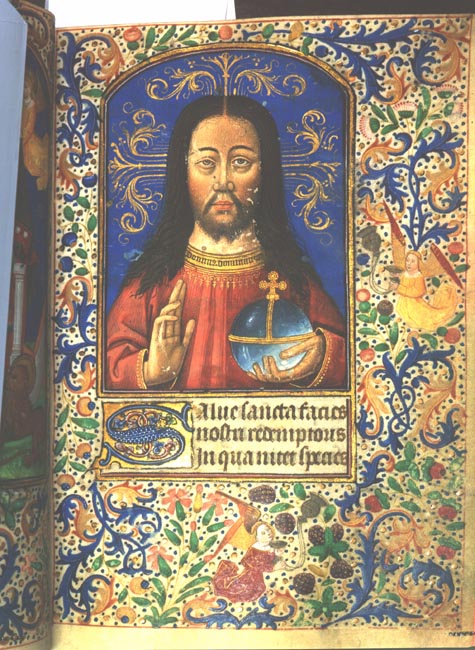
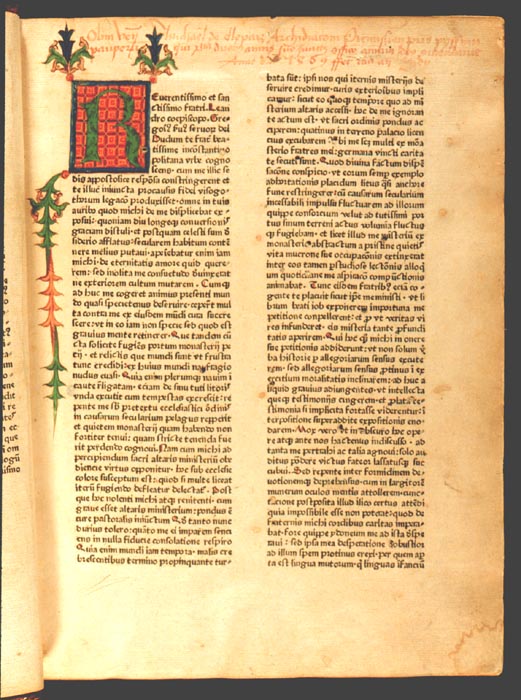
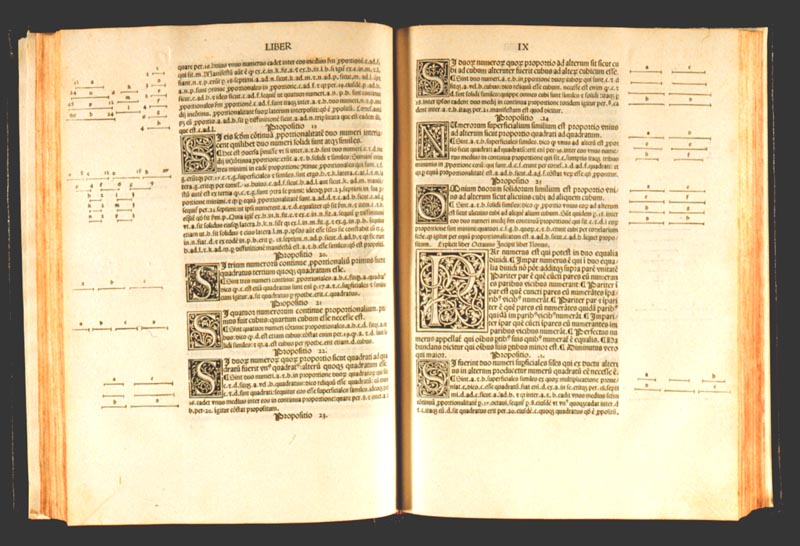
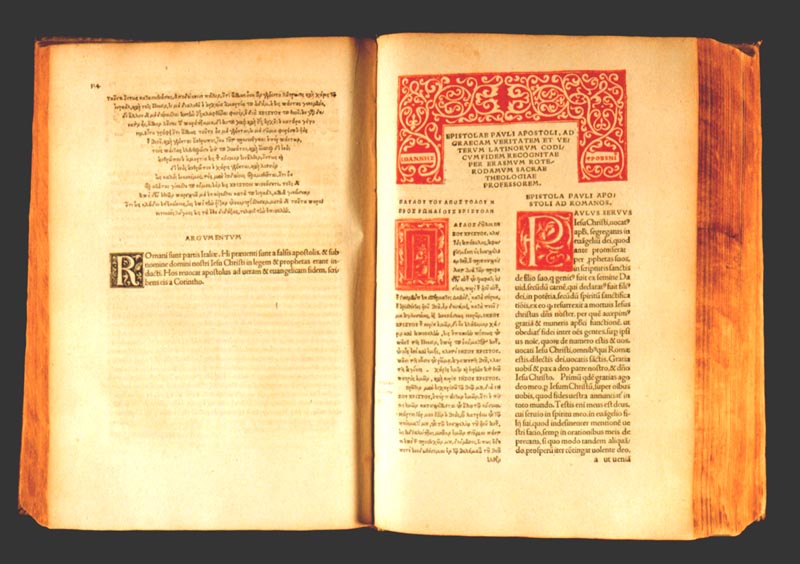

![Autograph letter, signed. Oñate, 19 May [1551]](/sites/default/files/images/treasures__007.jpg)
